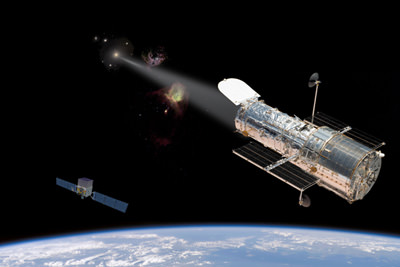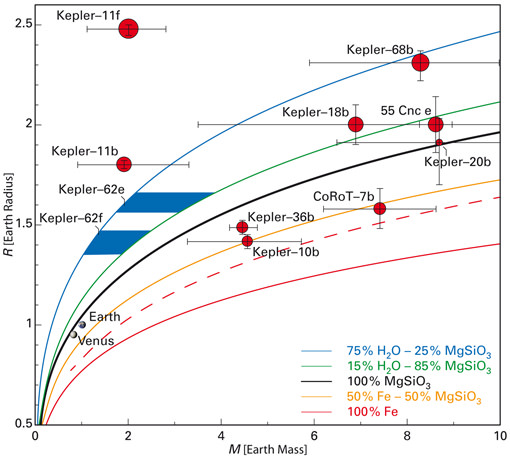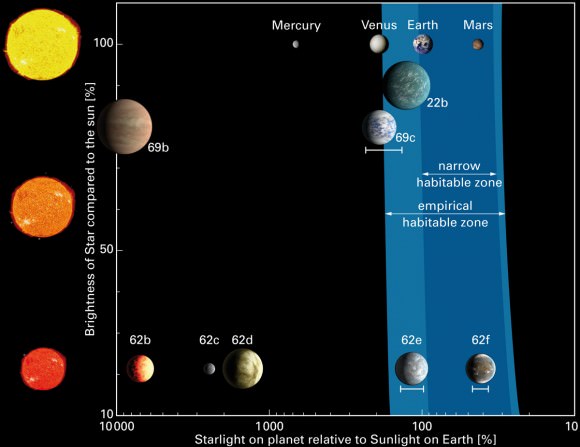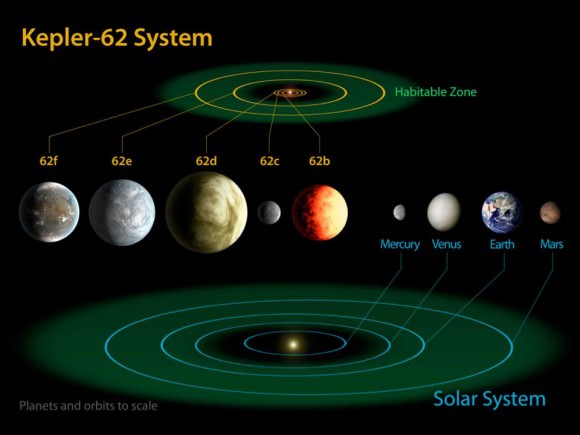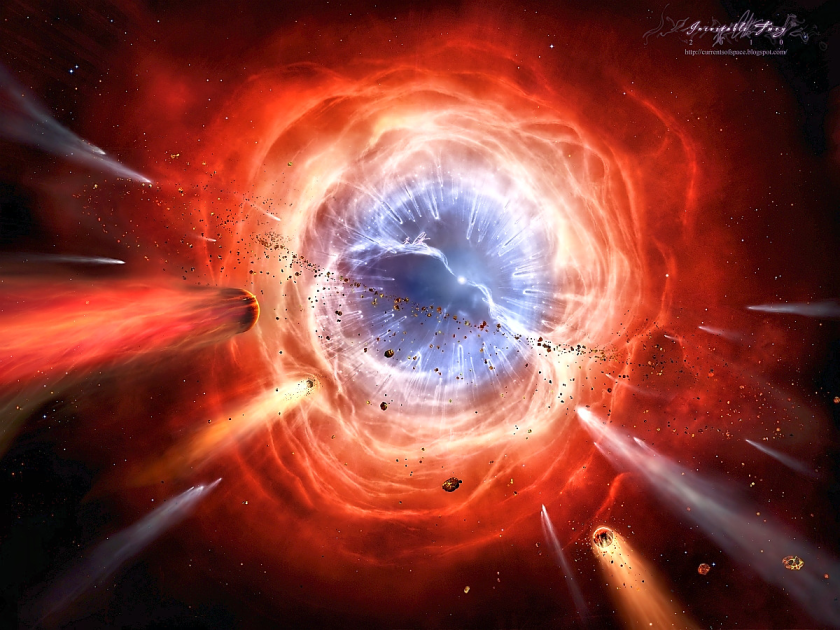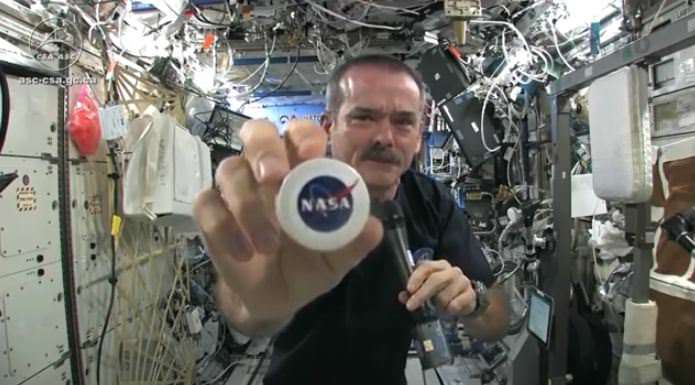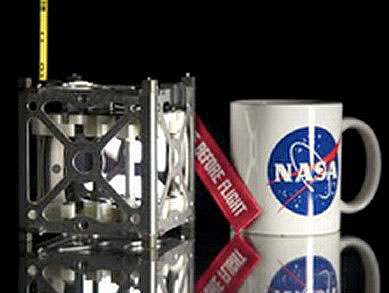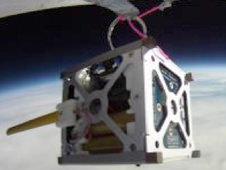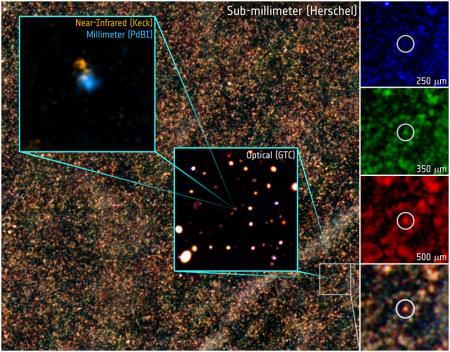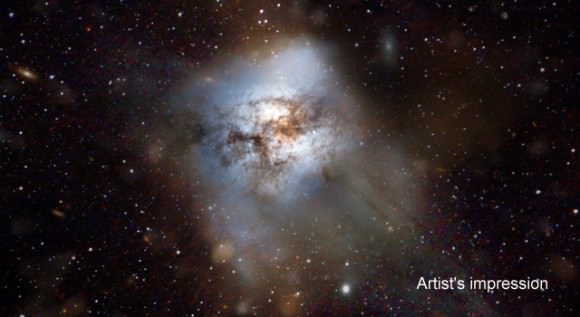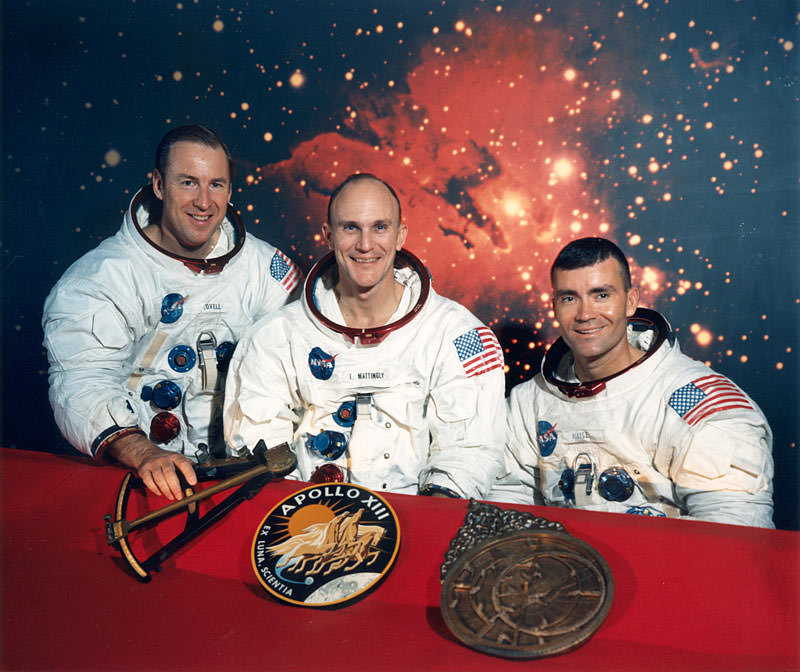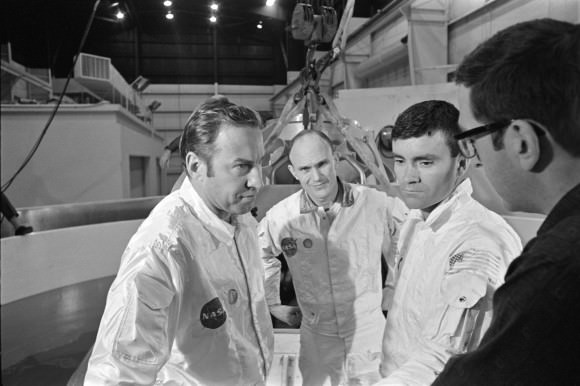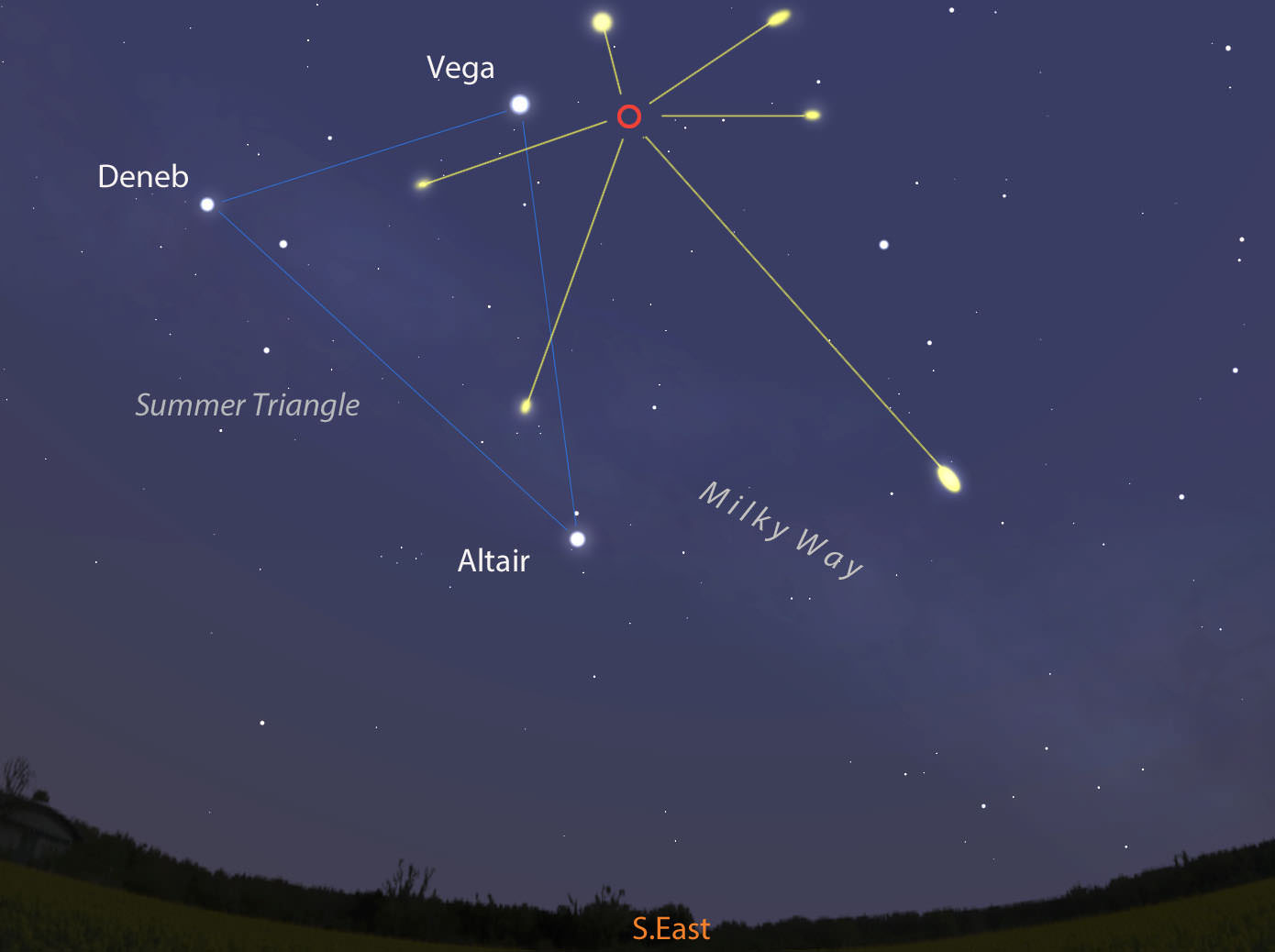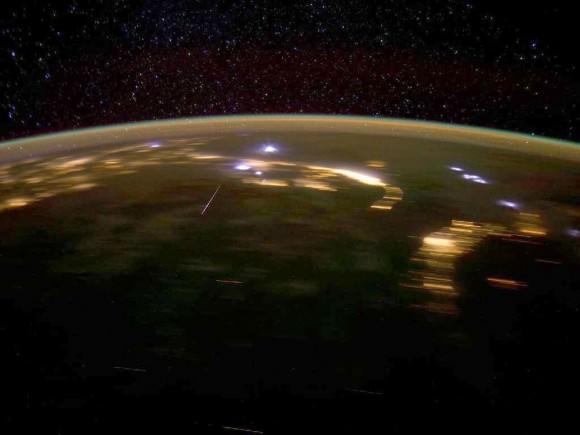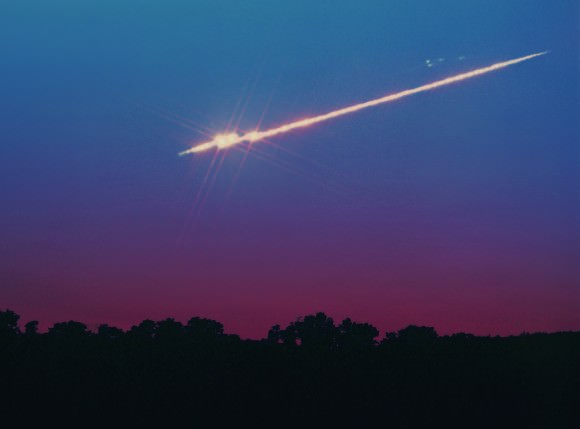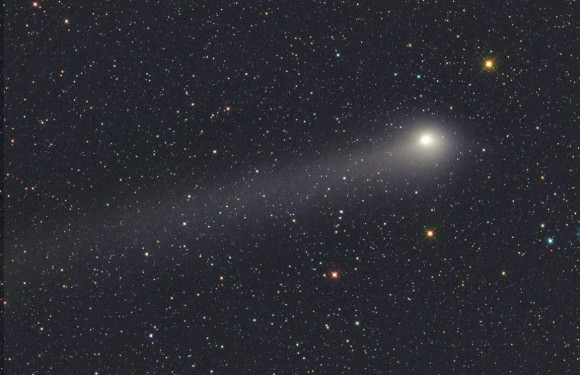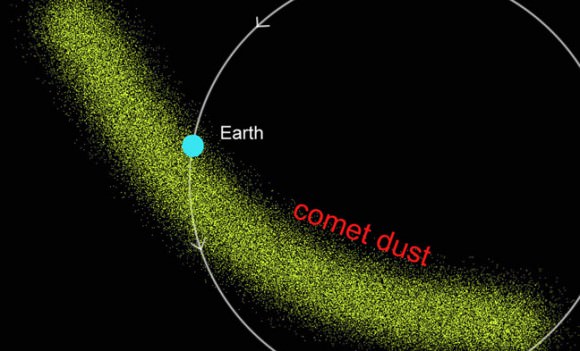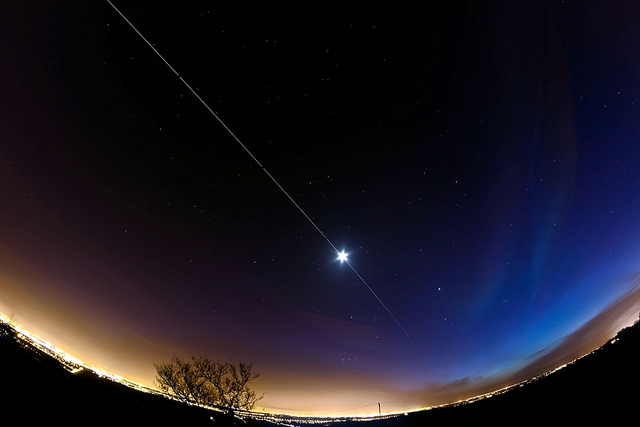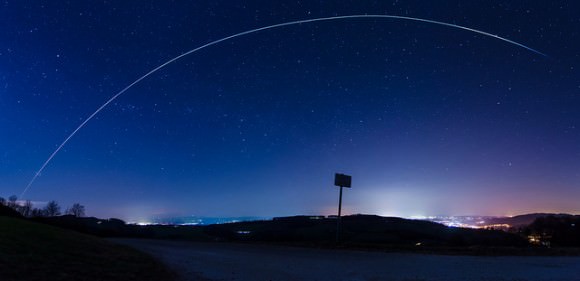When it comes to sheer wattage, blazars definitely rule. As the brightest of active galactic nuclei, these sources of extreme high-energy gamma rays are usually associated with relativistic jets of material spewing into space and enabled by matter falling into a host galaxy’s black hole. The further away they are, the dimmer they should be, right? Not necessarily. According to new observations of blazar PKS 1424+240, the emission spectrum might hold a new twist… one that can’t be readily explained.
David Williams, adjunct professor of physics at UC Santa Cruz, said the findings may indicate something new about the emission mechanisms of blazars, the extragalactic background light, or the propagation of gamma-ray photons over long distances. “There may be something going on in the emission mechanisms of the blazar that we don’t understand,” Williams said. “There are more exotic explanations as well, but it may be premature to speculate at this point.”
The Fermi Gamma-ray Space Telescope was the first instrument to detect gamma rays from PKS 1424+240, and the observation was then seconded by VERITAS (Very Energetic Radiation Imaging Telescope Array System) – a terrestrially based tool designed to be sensitive to gamma-rays in the very high-energy (VHE) band. However, these weren’t the only science gadgets in action. To help determine the redshift of the blazar, researchers also employed the Hubble Space Telescope’s Cosmic Origins Spectrograph.
To help understand what they were seeing, the team then set a lower limit for the blazar’s redshift, taking it to a distance of at least 7.4 billion light-years. If their guess is correct, such a huge distance would mean that the majority of the gamma rays should have been absorbed by the extragalactic background light, but again the answers didn’t add up. For that amount of absorption, the blazar itself would be creating a very unexpected emission spectrum.
“We’re seeing an extraordinarily bright source which does not display the characteristic emission expected from a very high-energy blazar,” said Amy Furniss, a graduate student at the Santa Cruz Institute for Particle Physics (SCIPP) at UCSC and first author of a paper describing the new findings.
Bright? You bet. In this circumstance it has to over-ride the ever-present extragalactic background light (EBL). The whole Universe is filled with this “stellar light pollution”. We know it’s there – produced by countless stars and galaxies – but it’s just hard to measure. What we do know is that when a high-energy gamma ray photo meets with a low-energy EBL photon, they essentially cancel each other out. It stands to reason that the further a gamma ray has to travel, the more likely it is to encounter the EBL, putting a limit on the distance to which we can detect high-energy gamma ray sources. By lowering the limit, the new model was then used to ” calculate the expected absorption of very high-energy gamma rays from PKS 1424+240″. This should have allowed Furniss’ team to gather an intrinsic gamma-ray emission spectrum for the most distant blazar yet captured – but all it did was confuse the issue. It just doesn’t coincide with expected emissions using current models.
“We’re finding very high-energy gamma-ray sources at greater distances than we thought we might, and in doing so we’re finding some things we don’t entirely understand,” Williams said. “Having a source at this distance will allow us to better understand how much background absorption there is and test the cosmological models that predict the extragalactic background light.”
Original Story Source: University of California Santa Cruz News Release. For further reading: The Firm Redshift Lower Limit of the Most Distant TeV-Detected Blazar PKS 1424+240.

